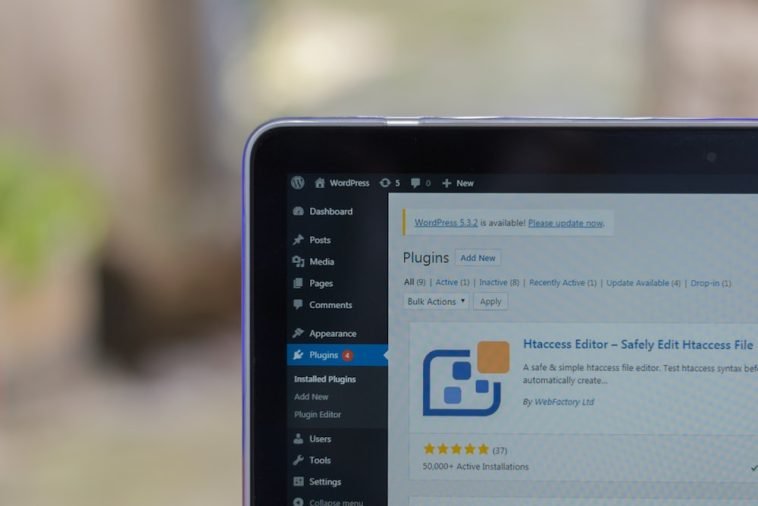Introduction.
Starting a new blog can be an exciting yet challenging journey. You pour your thoughts, knowledge, and creativity into your posts, but the real test comes when it’s time to attract readers.
Boosting traffic and gaining a presence for a new blog isn’t just about writing great content; it’s about making sure that content gets seen.
From mastering SEO techniques to leveraging social media and engaging with your audience, there are strategies you can use to increase visibility.
It’s not just about numbers; it’s about creating a community around your blog that keeps coming back.
Let me walk you through how to effectively boost your blog’s traffic and build a strong online presence, so your voice reaches the right audience.
How Do I Boost Traffic and Gain More Presence For a New Blog?
Starting a new blog is exciting, but getting it off the ground can feel like a daunting task.
It’s not just about writing great content; it’s about making sure that content gets seen.
Here’s how I would approach it:
1. Focus on Quality Content.
First and foremost, quality content is king. You can try all the tricks in the book, but if your content doesn’t provide value, people won’t stick around.
Write posts that are informative, engaging, and relevant to your target audience.
This means understanding what your readers are interested in and providing answers or insights that they can’t find elsewhere.
Tip: Use tools like Google Analytics or Ahrefs to see what topics are trending in your niche and what keywords people are searching for. This helps tailor your content to what your audience is looking for.
2. Optimize for SEO.
Search engine optimization (SEO) is crucial for driving organic traffic. This is the traffic that comes to your blog through search engines like Google, and it’s one of the most sustainable ways to grow your blog over time.
- Keyword Research: Identify the keywords that your audience is searching for and incorporate them naturally into your content. Tools like Ubersuggest or Google Keyword Planner can help you find relevant keywords.
- On-Page SEO: Ensure that your blog posts are optimized with proper meta tags, headings, and alt text for images. This helps search engines understand what your content is about and rank it accordingly.
- Mobile Optimization: With more people browsing on mobile devices, your blog must be mobile-friendly. Google’s mobile-first indexing means that the mobile version of your site is considered the primary version, so it’s vital to get this right.
- Site Speed: A fast-loading blog is not only great for user experience but also SEO. Google uses site speed as a ranking factor, so make sure your blog loads quickly. Use tools like Google PageSpeed Insights to check your speed and get tips on how to improve it.
3. Leverage Social Media.
Social media is a powerful tool for driving traffic to your blog. It allows you to reach a larger audience and engage with them directly.
- Choose the Right Platforms: Depending on your niche, certain social media platforms may be more effective than others. For example, Pinterest is great for lifestyle and DIY blogs, while LinkedIn is better suited for business or professional content.
- Consistency is Key: Regularly sharing your blog posts and engaging with your audience helps keep your blog top-of-mind. Use tools like Buffer or Hootsuite to schedule posts and maintain a consistent presence.
- Engage with Your Audience: Don’t just post links to your blog and walk away. Engage with your audience by responding to comments, asking questions, and participating in relevant groups or communities.
Statistic: According to a study by HubSpot, businesses that blog see 126% more lead growth than those that don’t.
This underscores the importance of not only creating content but actively promoting it through channels like social media.
4. Build an Email List.
An email list is one of the most valuable assets for a blogger. It allows you to reach your audience directly, without relying on algorithms or search engines.
- Offer Incentives: Encourage people to subscribe to your email list by offering something of value, such as a free eBook, checklist, or exclusive content.
- Send Regular Newsletters: Keep your subscribers engaged by sending regular newsletters with updates, new blog posts, and other valuable content. Make sure each email provides value and isn’t just a sales pitch.
Statistic: Email marketing has an average ROI of $42 for every $1 spent, making it one of the most effective marketing channels available.
5. Network with Other Bloggers.
Building relationships with other bloggers in your niche can lead to opportunities for guest posting, collaborations, and backlinks, all of which can drive more traffic to your blog.
- Guest Posting: Write guest posts for other blogs in your niche. This allows you to reach a new audience and build backlinks to your site, which is great for SEO.
- Collaborations: Partner with other bloggers for joint projects, such as webinars, podcasts, or co-authored blog posts. This can help you tap into each other’s audiences and expand your reach.
6. Use Paid Advertising (If It Fits Your Budget).
While organic growth is great, sometimes it pays to invest in advertising, especially when you’re just starting.
- Google Ads: Running a Google Ads campaign can help get your blog in front of people searching for related content.
- Social Media Ads: Platforms like Facebook, Instagram, and Pinterest offer targeted advertising options that can help you reach your ideal audience.
Tip: Start with a small budget to test what works, and then scale up as you see results.
7. Monitor Your Analytics and Adjust.
Finally, always keep an eye on your blog’s analytics. Tools like Google Analytics can provide insights into which posts are performing well, where your traffic is coming from, and how visitors are interacting with your site.
Use this data to adjust your strategy, double down on what’s working, and pivot away from what isn’t.
Statistic: According to BrightEdge, organic search drives 53% of all website traffic, making it the most significant channel for growth. This highlights the importance of focusing on SEO and content quality to attract more visitors.
Conclusion.
So, you’ve got a new blog and you want to see it flourish. That’s great! The world needs more fresh perspectives and unique voices.
But getting your blog noticed in the vast sea of online content can be challenging.
Remember: Consistency is key. Keep posting regularly, engage with your audience, and optimize your content for search engines.
By following these tips and experimenting with different strategies, you can gradually increase your blog’s traffic and build a loyal following.
Now, I’d like to ask you: What are your biggest challenges in growing your blog’s audience?
Share your thoughts in the comments below, and let’s discuss together how we can overcome them.





GIPHY App Key not set. Please check settings